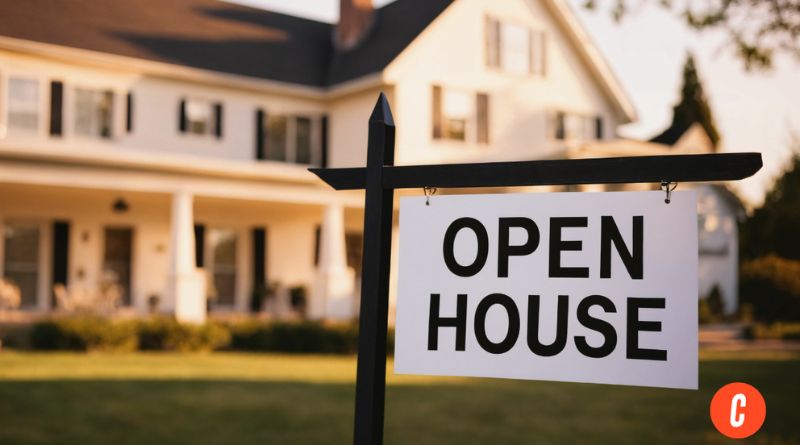
Open house signs are an essential tool in real estate marketing, providing visibility and attracting potential buyers to view a property. Whether you’re selling a home or managing a real estate agency, having effective open house signage can significantly boost the number of visitors and speed up the sale process. In this article, we will delve into the importance of open house signs, their types, design considerations, and how to use them effectively. We will also address some frequently asked questions to help you understand how to make the most of this valuable marketing tool.
Table of Contents
What Are Open House Signs?
Open house signs are large, usually free-standing signs that real estate agents or homeowners place outside properties to inform the public about an upcoming open house event. These signs serve as a beacon to attract potential buyers who may not be aware that a property is available for viewing. Typically, the signs display essential details such as the date, time, and location of the open house.
In real estate, an open house is an event where a property is open to the public for viewing, often without requiring an appointment. Open house signs are strategically placed around the neighborhood, at key intersections, and near the property to direct interested parties to the location.
The Importance of Open House Signs
Effective signage plays a critical role in real estate marketing for several reasons:
1. Increased Visibility
Open house signs help properties stand out in a competitive market. They attract the attention of prospective buyers, including those who may not have been actively searching for a property but are curious when they see a sign.
2. Drive Traffic
Open house signs guide potential buyers directly to the property, ensuring they know where the event is taking place. Clear, well-placed signs can increase foot traffic to the property, resulting in more people viewing the home and more chances for a sale.
3. Targeting the Right Audience
An open house sign can act as an invitation to individuals who may not have otherwise considered the property. This includes local residents, passersby, and people who are new to the area. Additionally, the signs can appeal to people who prefer open houses because they can view the property at their own pace without making an appointment.
4. Cost-Effective Marketing
For real estate agents and homeowners, open house signs are an affordable marketing strategy. They do not require the significant costs of online advertising, and their effectiveness depends largely on their placement and design. In many cases, an open house sign can bring in prospective buyers who would not have otherwise discovered the property.
5. Local Branding
For real estate professionals, open house signs help to build brand recognition in the community. By consistently using their logos, colors, and contact details on signs, real estate agents can increase their visibility and authority in the market.
Types of Open House Signs
There are several types of open house signs, each serving a specific purpose and designed for different environments. Here are some of the most common types:
1. Directional Open House Signs
These signs are designed to direct traffic to the open house location. They often have arrows or instructions such as “Turn left” or “Next street on the right” to guide potential buyers through the neighborhood. Directional signs are placed at strategic intersections, busy streets, and corners near the property. These signs are particularly helpful when the property is located in a more remote or hard-to-find area.
2. A-Frame Signs
A-frame signs (also known as sandwich boards) are some of the most common types of open house signs. These signs stand upright and can be easily moved or adjusted. They are typically placed on sidewalks or lawns and often feature details like the property’s address, open house times, and agent contact information. A-frame signs are particularly effective because they are highly visible and can be placed right in front of the property.
3. Flag Signs
Flag signs are often used in high-traffic areas or near the property. They feature a vertical design that is easy to see from a distance. These signs are particularly effective in areas where space is limited, as they can be placed on lawns, street corners, or along busy streets.
4. Window Signs
Window signs are typically used when a home has high foot traffic or when the open house is being held at a commercial property. These signs are often placed on windows near the property entrance, making them visible to anyone passing by. They are a good way to advertise an open house in areas with high visibility or when the property is located near a busy street.
5. Banner Signs
Banner signs are larger, often fabric or vinyl banners that can be placed along fences, walls, or in front yards. They typically display eye-catching designs with large, bold text, including details about the open house. Banner signs are great for attracting attention from a distance and are often used in areas with lots of passing traffic.
Key Elements to Include in an Open House Sign
To maximize the effectiveness of an open house sign, it’s important to include all the necessary information in a clear and readable format. Here are some essential elements to consider:
- Date and Time of the Open House: The sign should include the date and time of the event to inform potential buyers when they can visit the property. If the open house lasts for several hours, make sure to list the start and end times.
- Property Address: The address of the property being shown is essential. This should be displayed prominently, so passersby know exactly where to go.
- Agent Contact Information: Include the real estate agent’s name, phone number, and website (if applicable). This allows potential buyers to contact the agent if they need additional information or cannot attend the open house.
- Branding: Include the logo and brand colors of the real estate agency or homeowner. Consistent branding helps with recognition and establishes professionalism.
- Clear Call-to-Action: Phrases like “Open House Today!” or “Tour the Home” provide a sense of urgency and encourage potential buyers to stop by. Keep the text short, bold, and easy to read from a distance.
Best Practices for Using Open House Signs
While open house signs are a great marketing tool, their success depends on how well they are used. Here are some best practices to ensure your signs work effectively:
1. Place Signs Strategically
Position your signs in high-traffic areas and at key intersections to catch the attention of potential buyers. Make sure they are placed well before the open house event begins so that people have enough time to see them. Be sure to follow any local regulations regarding the placement of signs on public property.
2. Ensure Legibility
Use large, easy-to-read fonts on your signs. Avoid cluttering the design with too much text or unnecessary information. Focus on the most important details, such as the date, time, and location, and use large, bold fonts for clarity.
3. Ensure Good Visibility
Make sure your signs are visible from a distance and aren’t obstructed by trees, bushes, or other obstacles. If you’re using A-frame signs or flag signs, position them in areas where they are easy to spot and stand out.
4. Remove Signs After the Event
Once the open house is over, be sure to remove all signs to avoid cluttering the area. Leaving signs up can give the impression that the house is still for sale or that the event is ongoing.
5. Use Multiple Signs
For larger properties or ones located in complex neighborhoods, use multiple directional signs to guide visitors to the open house. The more signs you use, the more likely people are to find the event.
Frequently Asked Questions (FAQs) About Open House Signs
1. How many open house signs do I need?
The number of signs needed will depend on the location of the property and the layout of the neighborhood. Typically, it’s a good idea to place at least two to three directional signs around key intersections and one or two near the property itself.
2. Where should I place open house signs?
Place signs at major intersections, street corners, or high-traffic areas that are on the way to the property. Be mindful of local regulations regarding sign placement to avoid fines or removal of your signs.
3. Can I use open house signs for multiple events?
Yes, but it’s essential to update the information on the sign for each event. If you’re using reusable signs, make sure to change the date, time, and other relevant details before using them for another open house.
4. What size should an open house sign be?
The size of the sign will depend on where it’s being placed. A-frame signs are typically 24” x 36”, while directional signs may be smaller (18” x 24”). Make sure the text is large enough to be seen from a distance.
5. Are open house signs effective in today’s digital world?
Yes, open house signs still play a crucial role in real estate marketing, especially for attracting local buyers who may not be actively searching online. Physical signs can increase foot traffic and create a sense of urgency, driving more people to attend open houses.
Conclusion
Open house signs are an affordable and effective way to drive traffic to a property, increase visibility, and promote real estate events. When used strategically and designed effectively, these signs can help sellers connect with potential buyers and ultimately close a deal. By following best practices for placement, design, and removal, you can maximize the benefits of open house signs and enhance your real estate marketing strategy.




